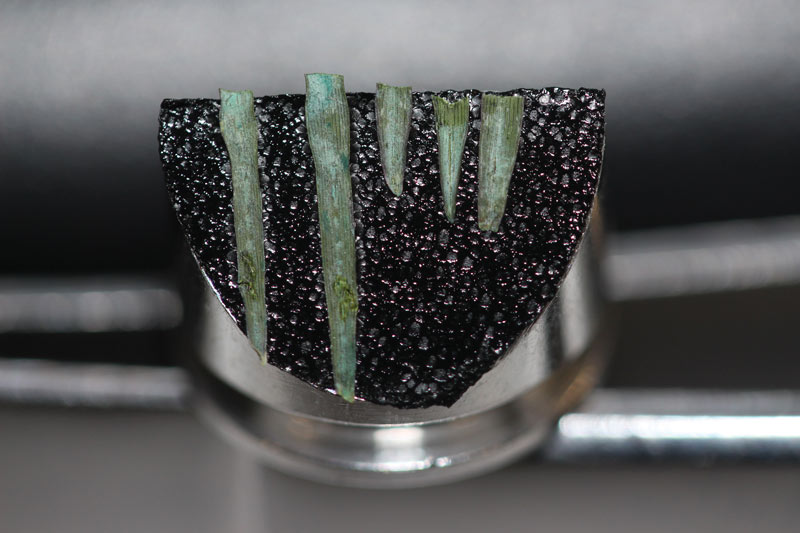February 2018
|
Teresa Carson


Photo by Casey Reynolds
Editor’s note: The following research project is in progress and was featured in the Cutting Edge section of GCM. This research project was funded by a grant to GCSAA from the Environmental Institute for Golf.
Turfgrass colorant applications have become increasingly common on putting greens throughout the United States. Colorants are used throughout the year during active growth, fall and spring shoulder seasons, and dormancy, and are routinely applied as a component of fungicide applications.
There is much discussion about the impact of colorants on plant health in regard to their effects on sunlight transmission, photosynthesis and transpiration. A variety of colorants are available, and they contain varying amounts of pigment and resin/binder, depending on the reasons for their use (winter overseeding replacement, fungicide tank-mixtures, tracker dye, etc.).
The goals of this project are to investigate the effects of colorants on turfgrass health by: (1) determining the thickness and coverage at which 10 commonly used colorants dry on leaves; (2) obtaining high-resolution digital images of the colorants using a scanning electron microscope (SEM); (3) determining the presence and concentration of chemical elements present in colorants using energy-dispersive spectroscopy (EDS); and (4) measuring and comparing transmission of photosynthetically active radiation (400-700 nm) and ultraviolet radiation (<400 nm) through colorants by using a Stellarnet spectroradiometer.
Preliminary results indicate unique differences among paints, pigments and dyes with regard to chemical makeup and the thickness and uniformity with which they dry on leaves. Differences in relative transmission of PAR and UV radiation have also been observed among the colorants evaluated.
— Manuel Chavarria, Ph.D., Texas A&M University, College Station, Texas; Casey Reynolds, Ph.D., Turfgrass Producers International, Lombard, Ill.; and Ben Wherley, Ph.D., Texas A&M University, College Station, Texas
Teresa Carson is GCM’s science editor.